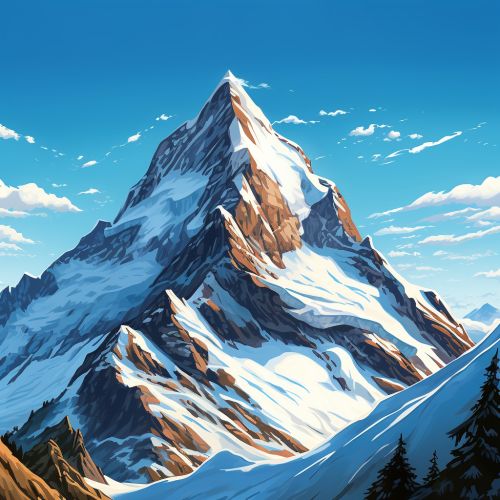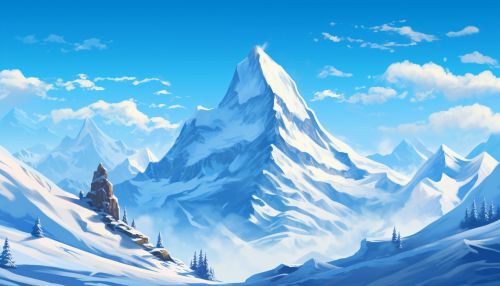Mountain
Introduction
A Mountain is a large landform that rises above the surrounding land in a limited area, usually in the form of a peak. Mountains are generally steeper than hills and are characterized by their relative height, size, steepness, and continuity. They are formed through tectonic forces, erosion, or volcanism. These forces can locally raise the surface of the Earth by over 10,000 feet.
Formation
Mountains are formed through tectonic forces or volcanism. These forces can locally raise the surface of the Earth. The formation of mountains is called Orogeny. During orogeny, the crust is severely deformed, and this deformation is the result of compressional forces. These forces push horizontally, causing the crust to buckle, fold, and thrust, or break along faults. This process is slow, taking place over millions of years.


Types of Mountains
There are several types of mountains: volcanic, fold, block, and plateau.
Volcanic Mountains
Volcanic Mountains are formed when molten rock (magma) deep within the Earth, erupts, and piles upon the surface. Examples include Mount Fuji in Japan, Mount Rainier in the USA, or Mount Kilimanjaro in Tanzania.
Fold Mountains
Fold Mountains are the most common type of mountain. They are formed when two tectonic plates collide head on, and their edges crumbled, much the same way as a piece of paper folds when pushed together.
Block Mountains
Block Mountains are created when faults or cracks in the Earth's crust force some materials or blocks of rock up and others down. Instead of the crumpled look of fold mountains, block mountains have a steep front side and then a flat back side.
Plateau Mountains
Plateau Mountains, also called erosional mountains, are formed by the Earth's external forces that wear away the landscapes. Rivers are the most potent force in shaping plateau mountains.
Climate
The climate of mountains is notably different from that of the surrounding lowlands, and can change dramatically with altitude. This is because of two primary factors: variation in the amount of solar radiation received by an area, and the topography of the mountainous landscape.
Flora and Fauna
Mountains are home to a variety of plant and animal species. At lower altitudes, one may find forests of trees such as oak, pine, or even tropical rainforests in some parts of the world. As one ascends, the climate becomes harsher, and the plant life becomes less diverse. Animal life is also abundant and diverse in mountain ranges, from large mammals like bears and mountain lions to smaller creatures like birds and insects.
Human Interaction
Mountains have played a significant role in human culture and lore. They have been revered as sacred places by many cultures throughout history. Today, they serve as a major source of recreation, with activities such as hiking, skiing, and mountaineering attracting millions of people to mountain ranges around the world.
